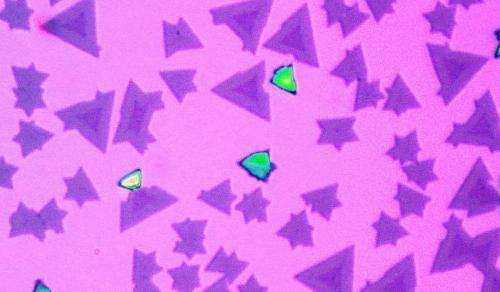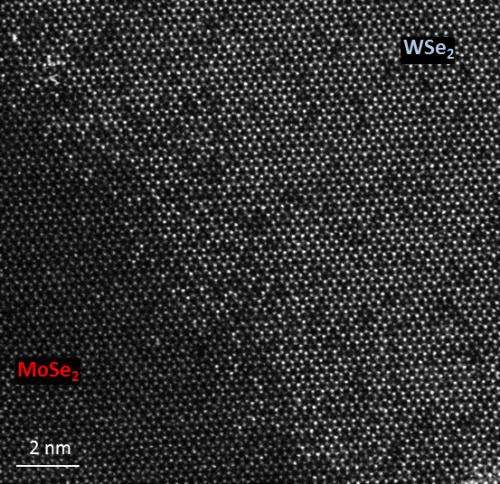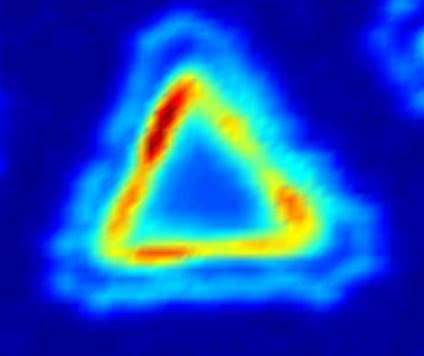Scientists craft atomically seamless, thinnest-possible semiconductor junctions

Scientists have developed what they believe is the thinnest-possible semiconductor, a new class of nanoscale materials made in sheets only three atoms thick.
The University of Washington researchers have demonstrated that two of these single-layer semiconductor materials can be connected in an atomically seamless fashion known as a heterojunction. This result could be the basis for next-generation flexible and transparent computing, better light-emitting diodes, or LEDs, and solar technologies.
"Heterojunctions are fundamental elements of electronic and photonic devices," said senior author Xiaodong Xu, a UW assistant professor of materials science and engineering and of physics. "Our experimental demonstration of such junctions between two-dimensional materials should enable new kinds of transistors, LEDs, nanolasers, and solar cells to be developed for highly integrated electronic and optical circuits within a single atomic plane."
The research was published online this week in Nature Materials.
The researchers discovered that two flat semiconductor materials can be connected edge-to-edge with crystalline perfection. They worked with two single-layer, or monolayer, materials – molybdenum diselenide and tungsten diselenide – that have very similar structures, which was key to creating the composite two-dimensional semiconductor.
Collaborators from the electron microscopy center at the University of Warwick in England found that all the atoms in both materials formed a single honeycomb lattice structure, without any distortions or discontinuities. This provides the strongest possible link between two single-layer materials, necessary for flexible devices. Within the same family of materials it is feasible that researchers could bond other pairs together in the same way.

The researchers created the junctions in a small furnace at the UW. First, they inserted a powder mixture of the two materials into a chamber heated to 900 degrees Celsius (1,652 F). Hydrogen gas was then passed through the chamber and the evaporated atoms from one of the materials were carried toward a cooler region of the tube and deposited as single-layer crystals in the shape of triangles.
After a while, evaporated atoms from the second material then attached to the edges of the triangle to create a seamless semiconducting heterojunction.
"This is a scalable technique," said Sanfeng Wu, a UW doctoral student in physics and one of the lead authors. "Because the materials have different properties, they evaporate and separate at different times automatically. The second material forms around the first triangle that just previously formed. That's why these lattices are so beautifully connected."

With a larger furnace, it would be possible to mass-produce sheets of these semiconductor heterostructures, the researchers said. On a small scale, it takes about five minutes to grow the crystals, with up to two hours of heating and cooling time.
"We are very excited about the new science and engineering opportunities provided by these novel structures," said senior author David Cobden, a UW professor of physics. "In the future, combinations of two-dimensional materials may be integrated together in this way to form all kinds of interesting electronic structures such as in-plane quantum wells and quantum wires, superlattices, fully functioning transistors, and even complete electronic circuits."
The researchers have already demonstrated that the junction interacts with light much more strongly than the rest of the monolayer, which is encouraging for optoelectric and photonic applications like solar cells.
More information: Nature Materials paper: www.nature.com/nmat/journal/va … t/full/nmat4064.html
Journal information: Nature Materials
Provided by University of Washington




















